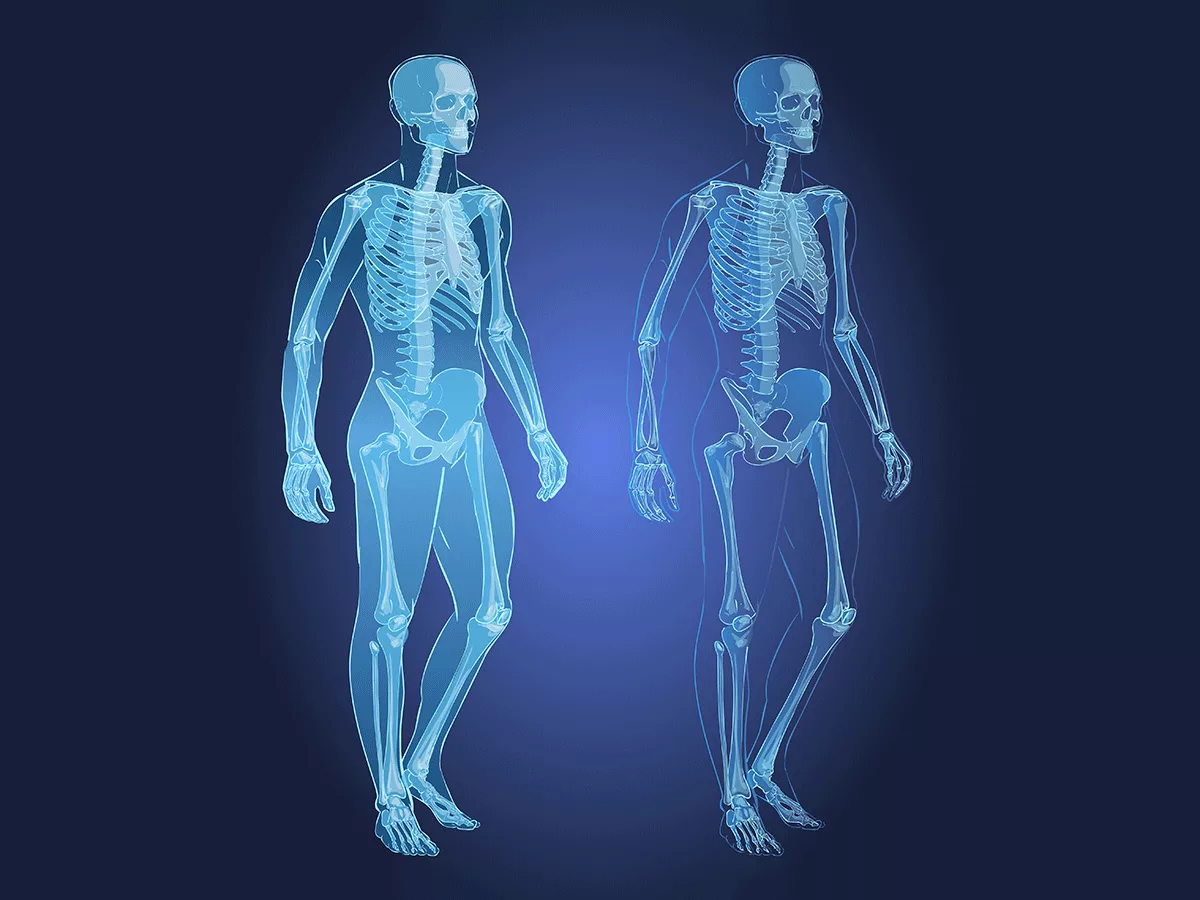Scientists at Osaka University have discovered that intercellular communication via extracellular vesicles from osteoblasts, cells that are specialized for laying down new bone, is a key factor for the transition from bone formation to resorption via a microRNA (miRNA)-mediated mechanism.
Using a newly developed high-resolution microscopy system, the researchers have also identified a subset of osteoblast-derived vesicles that limit bone formation and stimulate bone-resorbing osteoclast differentiation via a miRNA-mediated mechanism.
This osteoblast communication via extracellular vesicles controls the dynamic transition from bone-forming to bone-resorbing phases in vivo and could represent a target for new treatments for bone diseases including osteoporosis, the authors reported in the February 24, 2022, edition of Nature Communications.
"This is the first study showing the actual mode of communication between osteoblasts via extracellular vesicles," said lead researcher, Masaru Ishii, a professor in the Department of Immunology and Cell Biology at the Graduate School of Medicine, Osaka University.
"Bone-forming osteoblasts and bone-resorbing osteoclasts work cooperatively but, while the transition from the osteoclastic to blastic phases has been extensively studied, the mechanisms underlying those from the osteoblastic to clastic phases are less understood," said Ishii.
"In this study, we have shown for the first time that extracellular vesicles released from mature osteoblasts regulate osteoblastic to osteoclastic transition," he told BioWorld Science.
Regarding treatment, "if we can stop transition into osteoclastic phase, we may be able to treat bone-destructive disorders such as osteoporosis, arthritic bone destruction and bone metastatic cancers," said Ishii.
Osteoblasts are known to function collectively to generate bone over the course of several months, although how they cooperate with each other in vivo has remained unknown.
Now, the Osaka University researchers have developed an advanced high-resolution microscopy system with which to visualize extracellular vesicles secreted and captured by mature osteoblasts in vivo.
Bone remodeling occurs in different parts of the body throughout life, in order to maintain the balance of bone architecture and systemic mineral homeostasis.
During this remodeling process, osteoclasts remove mineralized bones, whereas osteoblasts form new bones, with these resorption and formation phases being linked and balanced with intermittent coupling phases.
"Functional coupling between these two cell types is critical for the maintenance of proper bone metabolism, and the mechanisms controlling the transition from bone-resorbing to bone-forming phases have been investigated," said Ishii.
"Nevertheless, the molecular and cellular mechanisms terminating osteoblastic bone formation and promoting osteoclastic bone resorption have remained elusive," explained Ishii.
He noted that intravital optical imaging using multiphoton microscopy can help dissect in vivo cellular dynamics in various intact tissues and organs.
To understand the spatiotemporal dynamics of bone remodeling in vivo, the researchers have developed an intravital imaging technique to visualize the intact bone tissues of mice.
"A unique feature of our newly developed intravital microscopy system is its high spatial resolution, which enables us to grasp extracellular vesicles, which are smaller than cells, as well as cells/tissue," said Ishii.
Using this technique, they explored the interaction between bone-destroying osteoclasts and bone-forming osteoblasts, but the spatial resolution of intravital bone imaging was insufficient to visualize structures smaller than cells.
"Thus we developed an advanced high-resolution microscopy system to visualize extracellular vesicles secreted and captured by mature osteoblasts in vivo," said Ishii.
"We then identified a subset of osteoblast-derived vesicles limiting bone formation and stimulating osteoclast differentiation, thus regulating the switch from bone formation to bone resorption through a microRNA-mediated mechanism."
Looking ahead, "now that we can capture the intercellular communication of vesicles, we are planning to manually manipulate the system for treating bone diseases," said Ishii.
"Also, we will try to capture small osteoblast-derived extracellular vesicles in human clinical samples, which may differ depending on disease conditions."
